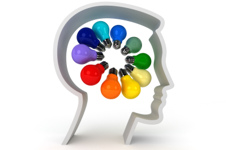Creativity Techniques – Start Here!

© iStockphoto/pavlen
The tools in this section can help you to become more creative. They are designed to help you devise creative and imaginative solutions to problems, and help you to spot opportunities that you might otherwise miss.
Before you continue, it is important to understand what we mean by creativity, as there are two completely different types. The first is technical creativity, where people create new theories, technologies or ideas. This is the type of creativity we discuss here. The second is artistic creativity, which is more born of skill, technique and self-expression. Artistic creativity is beyond the scope of these articles.
Many of the techniques in this chapter have been used by great thinkers to drive their creativity. Albert Einstein, for example, used his own informal variant of
Provocation to trigger ideas that lead to the Theory of Relativity.
Approaches to Creativity
There are two main strands to technical creativity: programmed thinking and lateral thinking. Programmed thinking relies on logical or structured ways of creating a new product or service. Examples of this approach are Morphological Analysis and the Reframing Matrix.
The other main strand uses 'Lateral Thinking'. Examples of this are
Brainstorming, Random Input and Provocation. Lateral Thinking has been developed and popularized by Edward de Bono, whose books you can find in the appropriate articles.
Programmed Thinking and Lateral Thinking
Lateral thinking recognizes that our brains are pattern recognition systems, and that they do not function like computers. It takes years of training before we learn to do simple arithmetic – something that computers do very easily. On the other hand, we can instantly recognize patterns such as faces, language, and handwriting. The only computers that begin to be able to do these things do it by modeling the way that human brain cells work . Even then, computers will need to become more powerful before they approach our ability to handle patterns.
The benefit of good pattern recognition is that we can recognize objects and situations very quickly. Imagine how much time would be wasted if you had to do a full analysis every time you came across a cylindrical canister of effervescent fluid. Most people would just open their can of fizzy drink. Without pattern recognition we would starve or be eaten. We could not cross the road safely.
Unfortunately, we get stuck in our patterns. We tend to think within them. Solutions we develop are based on previous solutions to similar problems. Normally it does not occur to us to use solutions belonging to other patterns.
We use lateral thinking techniques to break out of this patterned way of thinking.
Lateral thinking techniques help us to come up with startling, brilliant and original solutions to problems and opportunities.
It is important to point out that each type of approach has its strength. Logical, disciplined thinking is enormously effective in making products and services better. It can, however, only go so far before all practical improvements have been carried out. Lateral thinking can generate completely new concepts and ideas, and brilliant improvements to existing systems. In the wrong place, however, it can be sterile or unnecessarily disruptive.
Taking the Best of Each...
A number of techniques fuse the strengths of the two different strands of creativity. Techniques such as the Concept Fan use a combination of programmed and lateral thinking. DO IT and Min Basadur's Simplex embed the two approaches within problem solving processes. While these may be considered 'overkill' when dealing with minor problems, they provide excellent frameworks for solving difficult and serious ones.
The Creative Frame of Mind
Often the only difference between creative and uncreative people is self-perception. Creative people see themselves as creative and give themselves the freedom to create. Uncreative people do not think about creativity and do not give themselves the opportunity to create anything new.
Being creative may just be a matter of setting aside the time needed to take a step back and allow yourself to ask yourself if there is a better way of doing something. Edward de Bono calls this a 'Creative Pause'. He suggests that this should be a short break of maybe only 30 seconds, but that this should be a habitual part of thinking. This needs self-discipline, as it is easy to forget.
Another important attitude-shift is to view problems as opportunities for improvement. While this is something of a cliché, it is true. Whenever you solve a problem, you have a better product or service to offer afterwards.
Using Creativity
Creativity is sterile if action does not follow from it. Ideas must be evaluated, improved, polished and marketed before they have any value. Other sections of Mind Tools lay out the evaluation, analysis and planning tools needed to do this. They also explain the time and stress management techniques you will need when your creative ideas take off.
- See more at: http://www.mindtools.com/pages/article/newCT_00.htm#sthash.ZtxLuH9B.dpuf


ساحة النقاش